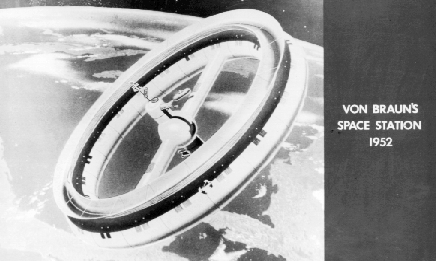
|
Credit & Copyright: Courtesy
NASA/MSFC Historical Archives
Explanation:
Orbiting 1,075 miles above the Earth, a 250 foot wide, inflated,
reinforced nylon "wheel"
was conceived in the early 1950s to function
as a navigational aid, meteorological station, military platform, and
way station for space exploration by rocket pioneer
Wernher von Braun.
The wheel-shaped station could be easily rotated creating artificial
gravity so that the astronauts would not suffer the effects of
prolonged weightlessness.
Von Braun and his team favored building a
permanently occupied
Earth orbiting space station from which to stage a lunar exploration
program.
But in the 1960s NASA adopted
the Apollo Program, which called for
astronauts to transfer to a landing vehicle after achieving lunar
orbit, bypassing the construction of von Braun's wheel.
|
January February March April May June July August September October November December |
| |||||||||||||||||||||||||||||||||||||||||||||||||||||||
NASA Web Site Statements, Warnings, and Disclaimers
NASA Official: Jay Norris. Specific rights apply.
A service of: LHEA at NASA / GSFC
& Michigan Tech. U.
Based on Astronomy Picture
Of the Day
Publications with keywords: space station - Wernher von Braun
Publications with words: space station - Wernher von Braun
See also:
